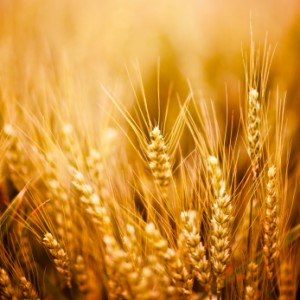 Wheat is one of those ubiquitous foods that allow for so much variety, and packs an amazingly hefty protein and calorie punch too. Unless you need to find a gluten-free alternative (in which case you might want to think about tapioca), wheat will probably be a mainstay of your prepping plans. You can cook it in a variety of ways, sprout it, or grind it to make flour for your favorite baked goods.
Wheat is one of those ubiquitous foods that allow for so much variety, and packs an amazingly hefty protein and calorie punch too. Unless you need to find a gluten-free alternative (in which case you might want to think about tapioca), wheat will probably be a mainstay of your prepping plans. You can cook it in a variety of ways, sprout it, or grind it to make flour for your favorite baked goods.
When I first started getting serious about storing food for the long term, I started shopping for wheat. After finding a good food co-op that sold wheat in 25 and 50 pound bags, I was ready to buy. But which one to get? Incorrectly assuming that wheat was, well, wheat, I was overwhelmed with a whole plethora of choices. Spring wheat, winter wheat, red wheat, white wheat, soft wheat, hard wheat … what on earth should I buy? So I just bought a 50-pound bag of several different kinds as my giant test. Then I felt a little buried under all that wheat, not to mention the fact that I had not really thought much about preserving it correctly yet.
To save you all that trouble (and perhaps some frustration from your loved ones in having wheat berries flowing through the kitchen like water), here is a basic primer to help you pick which type or types of wheat to purchase.
Durum vs. Common
If you are looking through a catalog or on a website, you will probably not see “common wheat” listed. This is because, unless stated otherwise you should assume that the wheat is what is considered common wheat – hence the name. Common wheat is what you typically think of when you think of wheat and is used to make bread, pastries, flour, etc.
Durum wheat is what is typically used for making pasta. When ground it sticks together better, making it ideal for pasta making but not for other types of baking. And it has the highest protein content of any type of wheat.
So if you are a pasta lover and want to delve into making it from scratch, then durum might be one to try. For beginning preppers, you will probably want to start with common wheat in your storage and menu planning.
Commercially, soft wheat is what is typically used in cake, cookies, biscuits and so on. As the name suggests, the kernels are softer and lend themselves to the light and fluffy texture of quick breads and sweets that we have become accustomed to. They are also easier to grind than hard berries—because they are soft they require less pressure to grind.
Like with all things in life though, there is a trade off. Softer berries may be easier to grind, but they also are less nutritionally dense. Primarily they have less protein, but soft wheat berries also contain fewer trace minerals, vitamins, and amino acids as well.
Even though soft wheat berries have lower protein and good stuff compared to hard wheat berries, they have more carbs and calories. This is where the idea of the “empty calories” of much of the processed baked goods that we eat comes from.
If you want to replicate exactly the taste and flavor of store bought goodies, then it may be worthwhile to buy some soft wheat berries to add to your pantry. But in my experience, you can make some tasty baked goods with the hard variety too, especially if you are using white berries which we will discuss next.
Red vs. White
A common misconception about red wheat berries as compared to white wheat berries is that red wheat is the traditional whole wheat you are accustomed to, while white wheat is what is used to make white flour. Red or white berries have nothing to do with the final flour. Traditional white flour you buy at the store is still a red wheat berries product except that it has been bleached or otherwise processed. White wheat is still just as completely a whole wheat as red, and the nutritional content is identical.
Flour ground from white wheat berries has become my secret weapon in the kitchen, allowing me to bake up all kinds of tasty baked goods that still have a much lighter texture and color than what you usually think of as “whole wheat,” while still getting all the whole grain goodness and protein of the wheat. I have even used it to make things like brownies and cake quite successfully.
Spring vs. Winter
Spring wheat and winter wheat are the exact same type of seed, just grown and harvested at different times of the year. Surprisingly, even this difference in growing season does make a difference in the final nutrition of the grains, as spring wheat has a slightly higher protein and gluten content than winter wheat.
While master bakers all seem to have an opinion about which is better when considering spring wheat vs. winter wheat, to me they seemed pretty similar. The big differences will be noticed in the choice between hard or soft, and red or white wheat.
Whatever wheat you choose, it will probably remain a mainstay of food storage. With proper care, wheat berries can last as many as 30 years, and can really fill you up in a pinch. Now you will be armed with the tools to start storing some yourself and know what exactly it is you are getting.
 Off The Grid News Better Ideas For Off The Grid Living
Off The Grid News Better Ideas For Off The Grid Living




